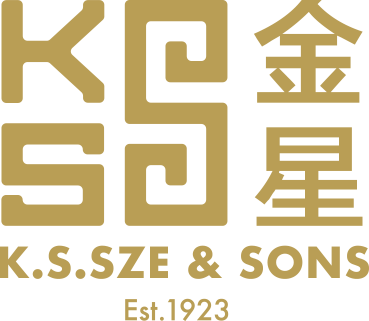Hong Kong Tatler , 1997
STARS FROM THE EAST
Given the current political climate, today it is chic to be Shanghainese. Ong Chin Huat identifies the prominent immigrant families from the city likened to Paris in its glory days there is a saying among Shanghainese women that while their mothers and grandmothers were wearing emeralds and diamonds in Shanghai, Cantonese women were still harvesting rice in the paddy fields of Canton (Guangdong).
Although Cantonese women have come a long way since then, the aphorism neatly illustrates the superior attitude of the Shanghainese towards their Cantonese cousins.
In the few years before and after the communists take power in 1949, many people who could leave Shanghai migrated to New York, but some headed south to Hong Kong. Many fled with nothing, and businessmen had to start again from scratch with the help of little more than their wits and their wives' jewellery. Pre-1949 Shanghai was a melting pot where people went to pursue a dream or realise an ambition. It is hard today to identify an original Shanghainese person, as the migrants married the locals; but in 1880 only 15 out of every 100 people were indigenous. However, the native Shanghainese were disparaging of anyone from outside the city and its environs, calling them jiangbei ren, meaning men from the north of the Yangtze; in effect, country bumpkins.
It is hardly surprising that the Shanghainese felt so superior. For more than a century, Shanghai was one of the leading ports in the world, earning the monicker “the Paris of the East’ because of its sophisticated lifestyle and stylish inhabitants. It was the first city in China to embrace Western culture.
Nowhere else in the country were there such impressive and imposing buildings as on its magnificent Bund. In the first half of this century the Shanghainese were, without a doubt, more sophisticated, glamorous and advanced than any other people in China.
The Shanghainese influx in the late ‘40s early ‘50s changed the face of Hong Kong. Being natural bon vivants, the Shanghainese injected glamour and sophistication, fun and frivolity into a hard-working society of mainly Cantonese and Chiu Chow people. Those who had managed to flee with suitcases of money set about recreate Shanghai’s heyday, throwing parties which set the standards for all to follow.
New arrivals first settled in North Point, hence the proliferation of Shanghainese restaurants and nightclubs in that area. As business improved and the immigrants prospered, they moved away from "Little Shanghai’ to more upmarket areas such as MacDonnell Road in Mid-Levels, the Peak, and Argyle Street and Waterloo Road Kowloon Tong, where they built huge houses, reminiscent of Avenue Joffre in their native city (Huaihai Road today).
It was the Shanghainese ladies who created a thriving tailoring business in Hong Kong. After the Japanese occupation of their home town before the war, many Shanghainese tailors and seamstresses had come to Hong Kong to ply their trade. They were more skilled than Cantonese tai-lors; getting a cheongsam made by a Shanghainese tailor was the equivalent of ordering a couture gown from Paris. The workmanship and detail of the cheongsams and winter jackets or this era were suberb: there are very few Shanghainese tailors left today and it is a very fortunate socialite who can find someone to duplicate the quality of her mother's or grandmother's Chinese gowns. In the '50s and '60s the best tailors were located in Kowloon, and if necessary they made house calls to ensure a perfect fit.
The wealthy women of those days would buy jewellery from Ping Chiu, the Maria Gaspari of her day who made private calls on all her Shanghainese clients. The jewellery business was almost single-handedly funded by Shanghainese ladies, who were envied by locals for their exquisite taste. K.S. Sze in the Manda-tin hotel was just one of the well-known jewellery shops of the time.
Dressed in all their finery and dripping with diamonds, Shanghainese loved to go dancing. During the early 1950s, they frequented clubs such as the Sky Room and later the Ritz in North Point, which boasted a grand ball-room, a dance hall and a resident band. The Champagne Room in Causeway Bay was the place to see and be seen, and here the chic Shanghainese foxtrotted the night away. The Empire nightclub in North Point was also a hot spot, with an opulent domed interior and a pillarless dance floor so that excitable couples could twirl without danger of collision. Luna Park, an anisement contre-cum-cabaret in North Point, was another popular place. The Shanghainese would take their children to swim there during the day, and return in the evening to dance.
Kai-Bong Chau, although not a Shanghainese himself, remembers his parents taking him to the Ritz in the 1950s, and was impressed by the ballroom and band. "I remember being overwhelmed by the size of the dance floor and the number of people doing everything from the jitterbug to the fox trot. And there was a singer called Cora who sang like Patti Paige,” he says.

